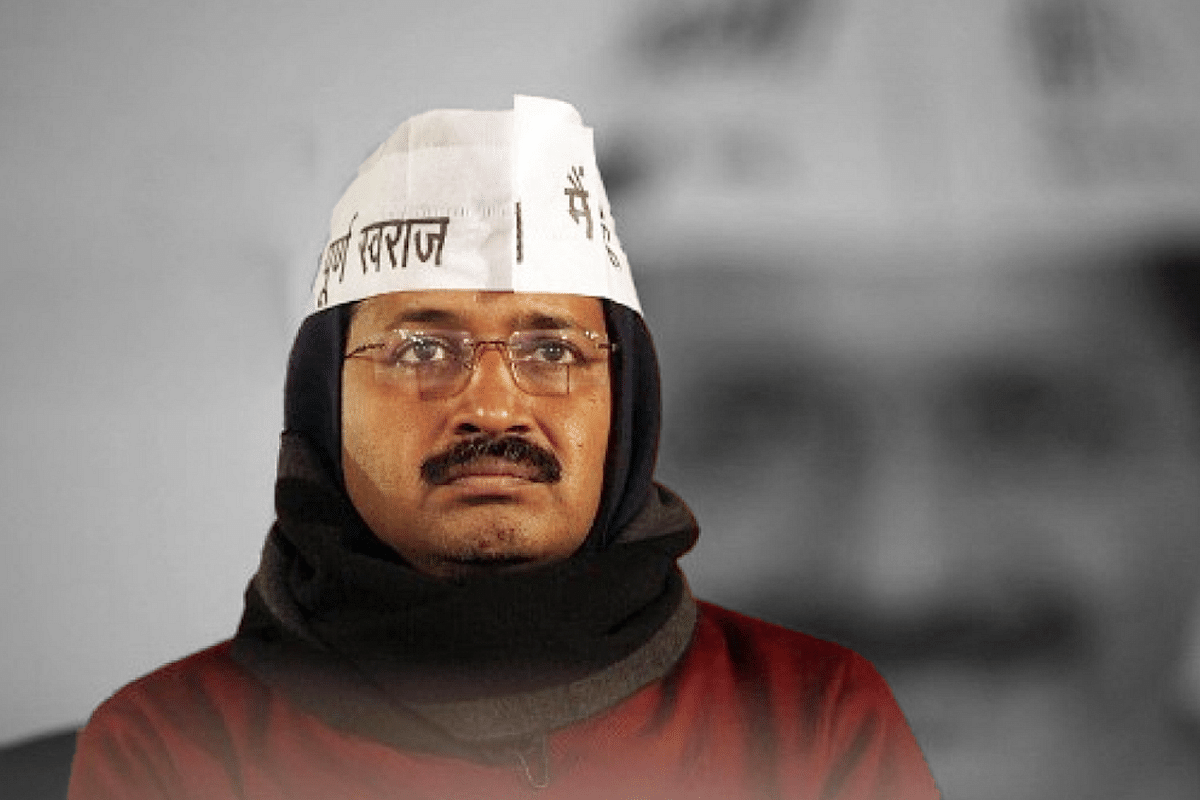Ideas
Delhi’s Healthcare Infrastructure Needs A Revamp, Not AAP’s Cosmetic Changes
- AAP government must address falling standards of healthcare infrastructure rather than boasting about the number of Mohalla Clinics they opened.
- What the healthcare sector requires is substantial transformation both in quantitative and qualitative terms, not the cosmetic changes delivered by the government.

Delhi Chief Minister Arvind Kejriwal
Delhi, the capital of India, is the hub of administrative and economic activities supporting a permanent population of about 20 million and also substantial migratory population from neighbouring states.
The challenge of providing good quality and affordable healthcare to the teeming millions of Delhi is a challenging task. This challenge is further complicated by the fact that in Delhi, healthcare facilities are being provided by multiple agencies like central government, state government, New Delhi Municipal Council (NDMC), Municipal Corporations of Delhi (MCDs) and private players.
Among all stakeholders the role of the elected government of National Capital Territory (NCT) of Delhi is the most critical.
In 2015, the people of Delhi gave an overwhelming mandate to Aam Aadmi Party (AAP) to govern and hopefully transform Delhi. These hopes, however, were belied and things have remained unchanged in the last five years in the healthcare scenario in Delhi.
Public Policy Research Centre — a New Delhi-based policy think-tank came out with its report on healthcare in Delhi, titled “Delhi- A city on Ventilator”: this report reveals that the performance of Delhi government in last five years remained high on rhetoric but abysmally low on substantive achievements.
The report exposes various failings and points out that AAP government’s five-year tenure marred by utter neglect of the healthcare sector.
Healthcare And AAP — Hype Versus Reality
AAP government has been consistently and vocally raising the demand to make Delhi a full-fledged state. However, they should realise that before having such aspirations they need to prove that they have the ability to effectively meet the needs of the people of Delhi and improve upon the existing situation of Delhi, especially in healthcare sector.
Overall performance of the Delhi government does not compare well with the performance of similar Union Territories and smaller states of the Union in the healthcare sector.
In the last five years, the state government has at all available forums tomtommed the fact that they are working to substantially increase not only the number of hospitals but also hospital beds to provide better healthcare to Delhi residents.
In reality, the state government has failed to increase the number of hospitals and dispensaries in an adequate and equitable manner. Therefore, the overall provisioning of healthcare infrastructure has suffered.
According to Delhi state government’s: “Economic Survey of Delhi, 2018-19,” the total number of dispensaries, run by the state government registered a sharp decline from 1,389 in 2014 to 1,298 in 2017 (a decrease of 91).
The last five years in Delhi have also been marked by constant shifting of goal posts by the AAP-led government.
In its 2015 manifesto, AAP promised to create 900 new primary health centres (PHCs). After a year in power the Chief Minister suddenly changed colour. He gave a go-by to new PHCs and in June 2016 promised that 1,000 Mohalla Clinics will be opened.
These clinics must not be confused with PHCs. Mohalla Clinics do not match the standard facilities provided in PHCs. PHCs provide 24-hour emergency services, facilities for institutional deliveries, inpatient facilities etc.
A mirror was shown to the state government by High Court of Delhi in 2018 and 2019 when it repeatedly pulled up the government for their inability to improve the infrastructure and manpower in government-run hospitals.
An adverse observation was made by Delhi High court regarding shortage of beds in intensive care units (ICUs), malfunctioning ventilators. Hospital such as G B Pant had to wait for a period of three years to receive an MRI machine. If this is how the state government intends to revolutionise Delhi’s healthcare, then god alone can save its citizen.
The government’s own audit report has concluded that its central procurement agency has failed miserably in procuring essential vaccines and drugs on time.
The biggest example of this has been shortage of anti-rabies vaccine in big government-run hospitals. The situation became so dire that these hospitals had to put up posters in their campus informing the patients suffering from dog bites that they did not have the said vaccine. This is the ground reality of Delhi’s healthcare sector.
The state government has also completely neglected augmentation of healthcare manpower. According to the latest data available Delhi suffers from acute shortages in this sphere.
There is 66 per cent shortage of medical lecturers, 34 per cent shortage of doctors and surgeons, 29 per cent shortage of paramedical staff including OT personnel and lab technicians and 40 per cent shortage of hospital administrative staff.
The AAP-led Delhi government must improve upon the falling conditions and standards of health infrastructure and manpower rather than investing all their energy on advertising “the number of Mohalla Clinics opened by them”, because ultimately it is the quality which matters not the quantity.
What Delhi requires in healthcare sector is substantial transformation both in quantitative and qualitative terms, but what has been delivered by the state government are mere cosmetic changes.
Introducing ElectionsHQ + 50 Ground Reports Project
The 2024 elections might seem easy to guess, but there are some important questions that shouldn't be missed.
Do freebies still sway voters? Do people prioritise infrastructure when voting? How will Punjab vote?
The answers to these questions provide great insights into where we, as a country, are headed in the years to come.
Swarajya is starting a project with an aim to do 50 solid ground stories and a smart commentary service on WhatsApp, a one-of-a-kind. We'd love your support during this election season.
Click below to contribute.
Latest